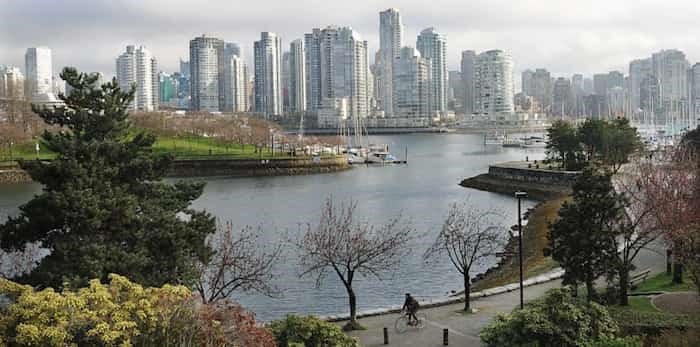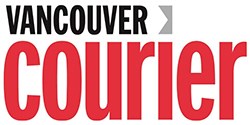Vancouver’s city-wide plan is expected to cost $17.9 million for the years 2019 to 2022 and involve a dedicated cross-departmental team of about 30 to 35 staff, according to a staff report going before council July 9.
Last November, council directed staff to create a work plan and timeline for the city-wide plan, which will guide future change and growth. Several councillors pushed for it during their election campaigns.
Chief planner Gil Kelley’s July 9 report outlines the budget, planning and engagement process for the plan's development.
Among details, the report recommends that existing rezoning policies remain in effect during the four-year process until “specific policies are brought forward or updated or repealed based on new directions determined as part of the city-wide plan.”
It also calls for “rigorous and deep” consultation with residents, businesses and other interest groups, with the first phase being an “intense listening phase.”
“A city-wide plan offers us a chance to develop a unified vision, strongly aligned with regional planning activities, to guide the choices that are within our control with good information, optimism, foresight and intention,” the report states.
Harland Bartholomew created Vancouver’s only city-wide plan in the 1920s under the guidance of the Vancouver Planning Commission. In 1995, council adopted CityPlan, which provided a framework for deciding City of Vancouver programs, priorities and actions over the subsequent 20 years. It spun off into the community visions program.
That process eventually lost momentum and was redirected into a series of area and community plans such as those for Marpole, the West End, the Downtown Eastside, Grandview-Woodland and the Cambie Corridor, according to the staff report.
Goals of the upcoming city-wide plan include:
- planning for complete neighbourhoods and exploring new housing types and densities
- advancing reconciliation with First Nations
- maintaining a diverse and inclusive community
- increasing and protecting housing supply that is locally affordable
- addressing transportation needs
- growing local jobs in a sustainable and diverse economy
- enhancing social well-being and local food security
- improving public amenities
- reducing greenhouse gas emissions and tackling the climate crisis.After the initial “listening” phase, which, if the report is approved, will take place in the last quarter of 2019 and the beginning of 2020, the report proposes staff develop strategic directions with the community during the second quarter of 2020 to the end of 2021. Phase three, at the end of 2021 to the second quarter of 2022, would involve refining and finalizing the plan, while phase four, in 2022, features implementation.While numerous community and area plans have been completed over the past decade, staff say the intent of the city-wide plan is not to revisit policy directions that have been covered in them.
“However, through the process there will be opportunity to ensure these plans align with the identified values and directions of the new city-wide plan,” the report states. “Updates and enhancements to various policies and plans may arise to improve directions towards the overall vision for the city, or respond to urgent issues and opportunities that arise during the planning process.”
City-wide land use policies that have been adopted over the years — such as the Moderate Income Rental Housing Pilot Program and the Affordable Housing Choices Program — will also be considered during the city-wide plan process.
After the initial “listening” phase, which, if the report is approved, will take place in the last quarter of 2019 and the beginning of 2020, the report proposes staff develop strategic directions with the community during the second quarter of 2020 to the end of 2021. Phase three, at the end of 2021 to the second quarter of 2022, would involve refining and finalizing the plan, while phase four, in 2022, features implementation.
While numerous community and area plans have been completed over the past decade, staff say the intent of the city-wide plan is not to revisit policy directions that have been covered in them.
“However, through the process there will be opportunity to ensure these plans align with the identified values and directions of the new city-wide plan,” the report states. “Updates and enhancements to various policies and plans may arise to improve directions towards the overall vision for the city, or respond to urgent issues and opportunities that arise during the planning process.”
City-wide land use policies that have been adopted over the years — such as the Moderate Income Rental Housing Pilot Program and the Affordable Housing Choices Program — will also be considered during the city-wide plan process.
Barkley wants to see spot rezoning stopped, citing the proposal for a 28-storey building at Broadway and Birch, which is being considered under the Moderate Income Rental Housing Pilot Program. She maintains it could be the precedent that changes the whole neighbourhood.
In her view, only already agreed-upon proposals should go forward, unless they comply with existing plans, until the city-wide plan is formed.
The CVN is also calling for “meaningful consultation” during the plan’s development.
“I’m sure you’ve heard many times that the kind of consultation that the city gives now is thought to be lip service at best and that decisions have already been made and they’re looking for a pre-determined outcome…” Barkley said.
Coalition members are “skeptical” going into the city-wide plan process, according to Barkley, although she felt better after her July 4 meeting with city staff. But the group still wants to meet with Kelley, which has yet to happen despite requests.
Charles Gauthier, president/CEO of the Downtown Vancouver Business Improvement Association, is “excited” about the city-wide plan, and he said the BIA will be “fully engaged.” But Gauthier is disappointed the organization’s “Reimagine Downtown Vancouver” report from 2015 wasn’t cited in next week's report.
The Reimagine Downtown Vancouver public engagement program, led by SFU Public Square, collected feedback about what people wanted the downtown to look like by 2040. About 11,000 people participated.
“Going forward, we’re hoping that will be taken into account and weaved into the process,” Gauthier said.
The BIA also just completed its first "state of downtown" annual report, which identifies challenges that need to be addressed, including a growing workforce.
“How do we strengthen and how do we build the economy?” Gauthier said, adding that transportation and land use decisions are particular areas of concern.
“We would be arguing that we need to see more densification throughout the city — I know that’s going to be controversial. With 20,000 new jobs coming on stream in the next five years just in the downtown alone, [and] with four million to five million new square feet of office space, we need to find a way to densify other parts of the city, maybe primarily along arterials and transit nodes,” he said.
Gauthier also said it may be time to reconsider the idea of view cones as Vancouver densifies and builds higher.
“We may need to rethink some of these policies that have been in place for 20 or 30 years. Yes, views are important but maybe there are going to be some other goals like housing affordability and housing inventory that are going to take priority over having a view,” he said.
Gauthier suspects there will be many opposing views raised during the development of the city-wide plan but he hopes participants take a longer view of the goals.
“I’m going to be hopeful that people will come together and they will think beyond their time in the city, whatever number of years they have left to live, and take the perspective of what kind of city they want this to be and not necessarily, ‘How is this going to impact me’ and ‘How will this impact my property values,’” he said.




